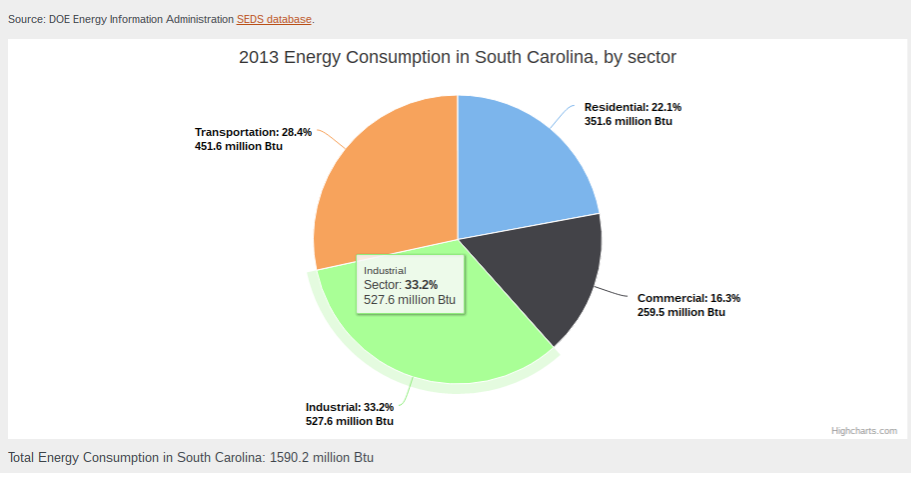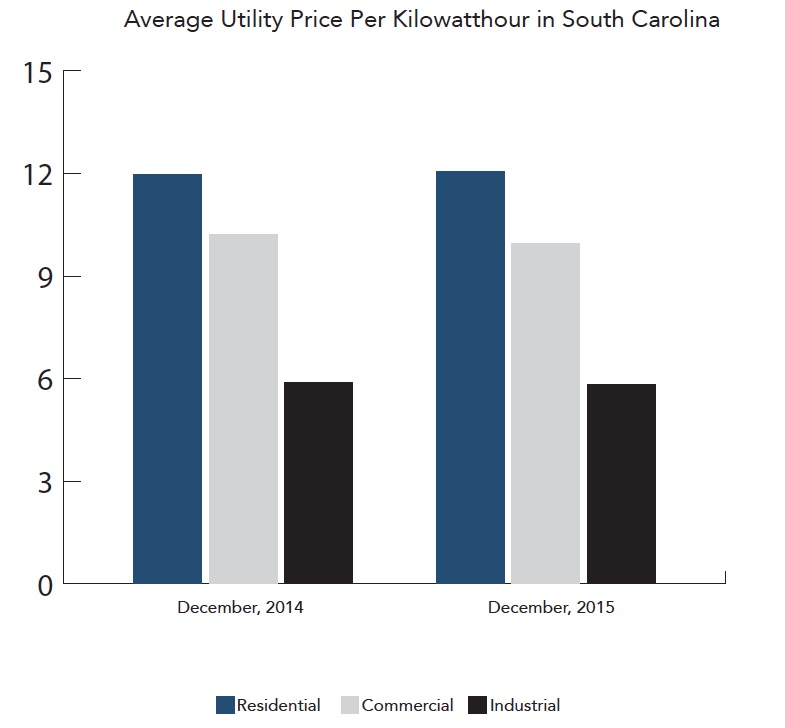In 2014, South Carolina’s average utility bill for residential customers was $147.74 making it the 2nd highest utility bill next to Hawaii which has an average of $187.59. Massachusetts has low energy consumption compared to South Carolina. One of the factors for this being “state efficiency programs” among other things like: “state economy’s reliance on less energy-intensive industries such as financial services, information technology, healthcare, and clean energy technologies.”
South Carolina’s largest consumer of electricity is industry consuming “nearly one-third of the state’s total energy”with transportation following closely behind using “more than one-fourth of the state’s total energy supply, primarily in the form of motor gasoline.” Interestingly, as residential ratepayers are seeing their price per kilowatt hour rise, industrial ratepayers are seeing their rate per kilowatt hour decline.
In December of 2015, the Board of Santee Cooper approved a 3.7 percent two-year rate increase to electric bills for 2016 and 2017. This rate increase is for all customers including industrial and commercial but South Carolina residential customers pay 50.2 percent more than industrial customers on average. This means that while industry is using more energy and getting a discounted rate, they are also enjoying a break on paying for the nuclear facilities. The rate increase is percentage based and large consumers are paying less per kilowatt hour than residential ratepayers. The largest costs are being pushed onto the ratepayers per individual kilowatt hour percentage.
According to average rates for 2015 per kilowatt hour in South Carolina, residential rates would rise by 0.47 cents per kilowatt hour where an industrial ratepayer would pay 0.21 cents per kilowatt hour. Looked at in a large lump sum, it might look like the industrial customer is paying more but calculated down to the actual kilowatt hour, residential customers are paying more than twice as much for facilities they will use much less of. Rate increases also affected residential ratepayer and benefited industrial ratepayer. In 2014-2015, when rate increases increased, residential rates rose by 0.88 percent and industrial rates reduced by 3.24 percent.

In the example shown in the graph below, a residential customer and an industrial customer both would use 1000 kWh of energy, their bills will differ drastically. The residential ratepayer would be charged $120.50 and the industrial customer would be charged $58.30. They both used the same amount of electricity, the same kWh, but received drastically different charges. The Base Load Review Act has tacked on an extra 3.7 percent to each customer’s bill to pay for new nuclear facilities to provide reliable baseload energy, the residential customer will be billed an extra $4.46 dollars and the industrial customer will only be billed and extra $2.16.

This example shows the inequality of the kWh in South Carolina. Not every kWh is treated equally, but what’s even more interesting is that industrial usage accounts for the largest energy consumption in the state and those customers are being excused from paying their fair share of the new nuclear plants. The small scale residential customers are bearing the brunt of the cost.
References
